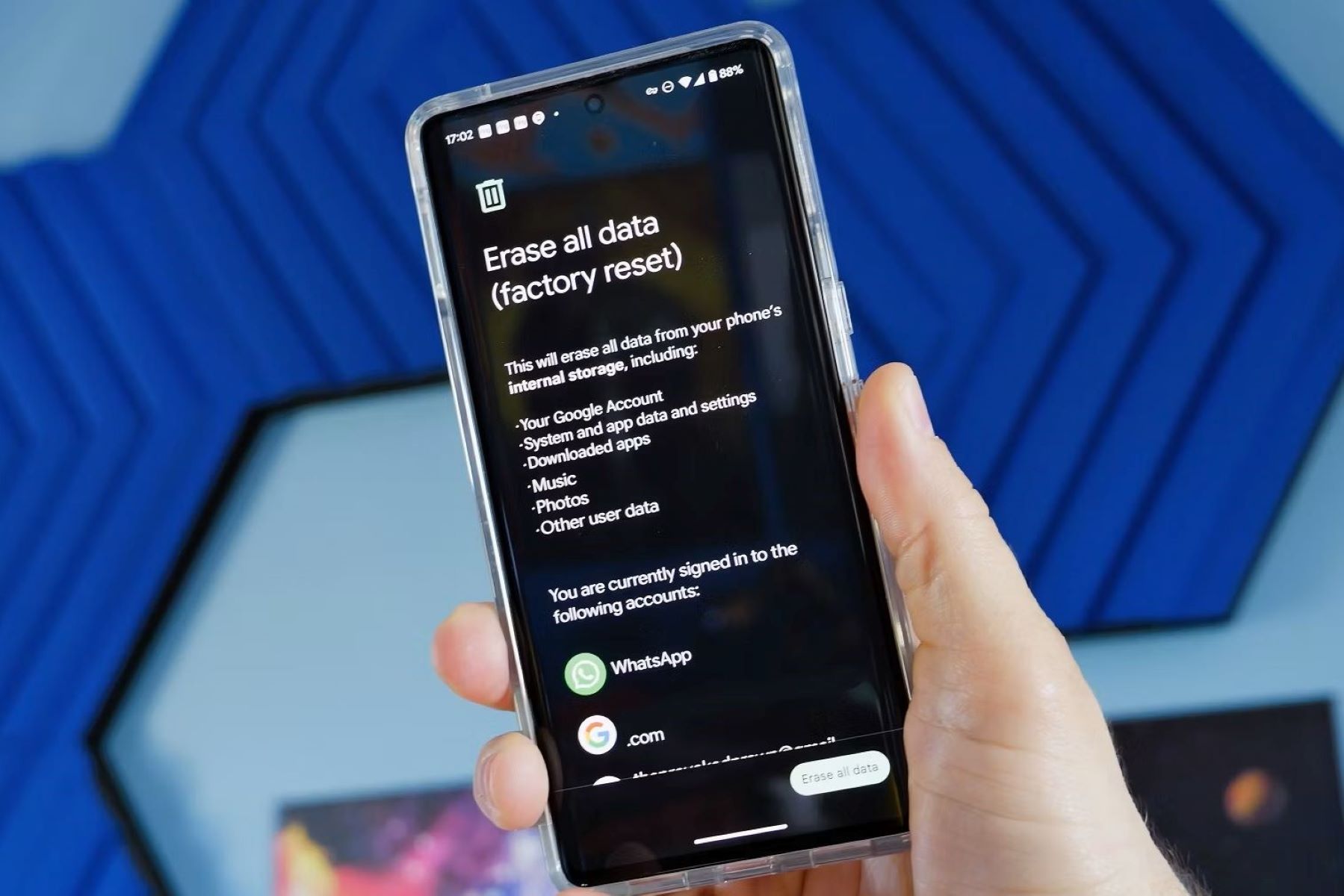App Cache and Data
One of the primary reasons for Android phone storage remaining full even after deleting files is the accumulation of app cache and data. When you use various apps on your Android device, they often store temporary data and cache to enhance the user experience. While this can be beneficial for quick access to frequently used information, it can also lead to a significant amount of storage being occupied over time.
App cache consists of temporary files that the applications store for quick access, such as images, scripts, and other multimedia elements. While these files are designed to speed up the app’s performance, they can accumulate and take up a considerable amount of space on your device. Additionally, app data includes user information, preferences, and other relevant details that apps store to personalize the experience. Over time, this data can grow in size and contribute to the storage-related issues on your Android phone.
To address this concern, you can manually clear the cache and data for individual apps through the device’s settings. By doing so, you can free up valuable storage space and potentially resolve the issue of the storage remaining full even after deleting files. Furthermore, some Android devices offer a built-in feature to automatically clear app cache and data, which can be enabled to manage this aspect more efficiently.
Large Media Files
Another common factor contributing to the persistence of full storage on Android phones after file deletion is the presence of large media files. Over time, users tend to accumulate a significant amount of photos, videos, and audio files on their devices, often unknowingly consuming substantial storage space. While these media files hold sentimental and practical value, they can also be a major contributor to the storage-related challenges experienced by Android users.
When users delete files from their devices, they may overlook the presence of large media files that remain stored in various folders and directories. These files can include high-resolution images, lengthy videos, and extensive music libraries that collectively consume a substantial portion of the device’s storage capacity. As a result, even after removing other files, the presence of these large media files can prevent users from experiencing a noticeable increase in available storage space.
To address this issue, users can proactively manage their media files by regularly reviewing and organizing their photo galleries, video libraries, and music collections. By identifying and removing redundant or unnecessary media content, users can free up valuable storage space and mitigate the problem of the storage remaining full despite file deletions. Additionally, leveraging cloud storage services or external storage options can provide users with alternative repositories for their media files, reducing the burden on the device’s internal storage.
Furthermore, employing specialized media management apps that facilitate the identification and deletion of large files can streamline the process of reclaiming storage space. These apps often offer features that analyze the storage utilization of media files, identify large or duplicate items, and provide users with insights to make informed decisions regarding file management. By actively managing their media content, Android users can effectively address the challenge of persistent full storage following file deletions.
System Files and Data
Android phones often retain a significant portion of their storage capacity for system files and data, which can contribute to the persistence of full storage even after file deletions. These essential components, integral to the operating system’s functionality, occupy space on the device and may not be readily visible or accessible to users. As a result, the presence of system files and data can hinder the expected increase in available storage following the deletion of user-generated content.
System files encompass critical components of the Android operating system, including the firmware, system apps, and essential system resources. These files are fundamental to the device’s functionality and are typically protected to maintain the stability and performance of the operating system. While users may not interact directly with these files, they occupy a portion of the device’s storage and can contribute to the challenge of persistent full storage.
Additionally, system data, such as logs, system caches, and other diagnostic information, is generated and stored by the operating system during regular usage. While these data serve important purposes, they can accumulate over time and occupy a notable portion of the device’s storage capacity. As a result, even after deleting user-generated files, the presence of system data can impede the expected increase in available storage space.
To manage the impact of system files and data on storage capacity, users can explore options to optimize the device’s storage usage. This may include leveraging built-in storage management tools provided by the Android operating system to identify and clear unnecessary system data. Additionally, users can consider periodic system updates and optimizations, which may include enhancements to storage management and the removal of obsolete system files to free up space.
Furthermore, cautious consideration of system modifications, such as rooting or custom firmware installations, is essential, as these actions can impact the allocation and utilization of storage for system files and data. By understanding and managing the presence of system-related storage components, Android users can effectively address the challenge of persistent full storage following file deletions.
Downloaded Files and Documents
Another factor contributing to the persistent full storage on Android phones after file deletions is the accumulation of downloaded files and documents. As users engage in various activities such as browsing the web, receiving email attachments, and downloading content, a multitude of files and documents are saved to the device’s internal storage. While these downloads may serve immediate purposes, they can collectively occupy a substantial portion of the available storage space, impacting the device’s overall storage capacity.
Downloaded files can encompass a wide range of content, including images, PDF documents, installation packages, and various media files. Over time, the accumulation of these downloads can contribute to the challenge of persistent full storage, particularly if users do not actively manage their downloaded content. Furthermore, documents received through messaging applications, emails, and other communication channels can also contribute to the storage-related issues experienced by Android users.
To address the impact of downloaded files and documents on storage capacity, users can adopt proactive measures to manage and organize their downloads effectively. This may involve periodically reviewing the Downloads folder on the device to identify and remove unnecessary or redundant files. Additionally, leveraging cloud storage solutions or external storage options can provide users with alternative repositories for their downloaded content, reducing the burden on the device’s internal storage.
Furthermore, users can consider utilizing specialized file management applications that offer features to streamline the organization and deletion of downloaded files. These applications may provide insights into the storage utilization of downloaded content, identify large or obsolete files, and facilitate the efficient management of documents and downloads. By actively managing their downloaded files and documents, Android users can effectively mitigate the challenge of persistent full storage following file deletions.
Corrupted Files and Data
Corrupted files and data can significantly contribute to the issue of Android phone storage remaining full even after file deletions. When files become corrupted due to various factors such as incomplete downloads, storage errors, or software issues, they can occupy space on the device without providing any functional value. These corrupted files may not be readily visible to users, yet they can significantly impact the available storage capacity and hinder the expected increase in free space following the deletion of files.
Corrupted data can manifest in different forms, including partially downloaded files, incomplete media content, or system files affected by storage errors. These corrupted elements, while not actively utilized by the device, can persist in the storage space and contribute to the challenge of persistent full storage. Moreover, the presence of corrupted data can impede the device’s performance and stability, necessitating proactive measures to identify and address these issues.
To manage the impact of corrupted files and data on storage capacity, users can leverage built-in storage analysis tools or third-party applications designed to identify and address corrupted content. These tools can facilitate the detection and removal of corrupted files, enabling users to reclaim valuable storage space and optimize the device’s performance. Additionally, running diagnostic checks and storage integrity assessments can aid in identifying and resolving potential issues related to corrupted data.
Furthermore, regular system maintenance, including software updates and integrity checks, can contribute to the prevention and resolution of storage-related issues stemming from corrupted files and data. By staying vigilant and proactive in managing the integrity of the device’s storage, Android users can effectively address the challenge of persistent full storage following file deletions, ensuring a more streamlined and efficient storage experience.
Uninstalled App Residue
Uninstalled app residue refers to the residual data and files that remain on an Android device even after the removal of an application. When users uninstall apps, they may assume that all associated data and files are completely removed from the device. However, in many cases, remnants of the uninstalled apps, such as cache files, app data, and residual folders, can persist on the device’s storage, contributing to the challenge of persistent full storage following file deletions.
These remnants are often overlooked by users, as they may not be readily visible through standard file management interfaces. However, the accumulation of uninstalled app residue can collectively occupy a notable portion of the device’s storage space, impeding the expected increase in available storage following the deletion of user-generated content. Additionally, these remnants may not serve any functional purpose, further exacerbating the storage-related challenges experienced by Android users.
To address the impact of uninstalled app residue on storage capacity, users can employ various strategies to identify and remove these residual files. This may involve utilizing dedicated app management tools or file exploration applications that offer insights into the storage utilization and residual data left behind by uninstalled apps. By leveraging these tools, users can effectively identify and remove unnecessary app residue, reclaiming valuable storage space and optimizing the device’s storage capacity.
Furthermore, periodic reviews of the device’s installed apps and associated data can aid in identifying and managing uninstalled app residue. Users can proactively assess the storage impact of installed apps and their residual data, making informed decisions regarding the removal of unnecessary files and remnants left behind by uninstalled applications.
Additionally, staying informed about best practices for app management and utilizing system features that facilitate comprehensive app removal can contribute to the mitigation of uninstalled app residue. By adopting proactive measures to manage residual app data, Android users can effectively address the challenge of persistent full storage following file deletions, ensuring a more streamlined and efficient storage experience.


